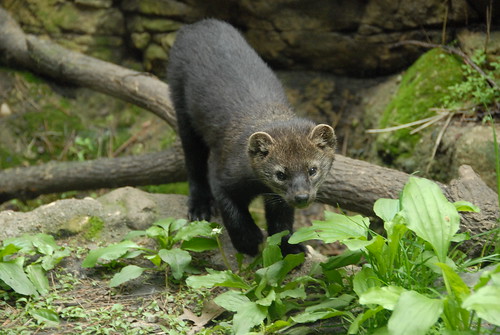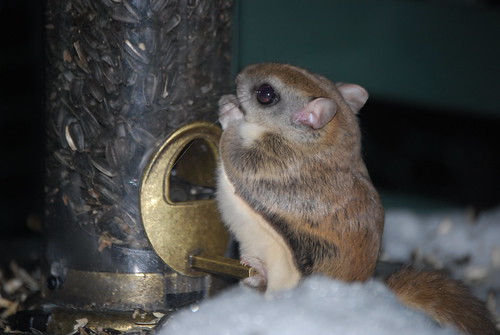We have much more to do and your continued support is needed now more than ever.
Today Show: Wildlife of the Americas
On my most recent appearance on The Today Show I brought on wildlife species form North and South America.
These TV segments always go by too quickly, and I can never get in all the cool facts about the animals and conservation messages that I want to. So, watch the clip and then keep reading to get even more info about each of these cool wild animals.
Don’t forget to let us know which one was your favorite in the comments section!
[flash width=”592″ height=”346″ movie=”http://www.msnbc.msn.com/id/32545640″ FlashVars=”launch=52734703&width=592&height=346″]
Here’s more info on each of the animals featured in the segment.
Caiman Lizard (Dracaena guianensis)
- Native to South America
- Common in the Amazon basin
- Spends most of time in water and is a strong swimmer
- Long, flat tail similar to that of crocodilans (such as caimeas, for which they are named) and aid in swimming
- Also good climbers and hang out in trees overhanging the water
- Predatory with powerful jaws used for crushing shells of their primary prey, snails
- Also feed on crabs, insects and sometimes fish, small mammals and amphibians

Fisher (Martes pennanti)
- Native to North America
- Found in northern forests in across Canada and the northern U.S. with some small populations in California and western mountains
- Member of the weasel family
- Also called the “fisher cat” even though it is not a cat
- Males twice the size of females and tend to have more golden or grizzled fur
- Found in forests across Canada and northern U.S.
- Arboreal (lives in trees) but often hunts on the ground too
- Predatory and opportunistic, feeding on squirrels, rabbits, birds, mice and even foxes
- One of the few predators of porcupines – attack the face and flips them over to feed on their quill-less bellies

Three-banded Armadillo (Tolypeutes matacus)
- Native to South America
- Live in dryer, more open woodland and grassland environments in Bolivia, Brazil, Paraguay, Argentina
- Back is covered by thick, leathery shell made up of a front dome and back dome separated by 3 segments (hence the animal’s name)
- Can roll into a tight ball to use shell to protect head, limbs and belly from predators; only armadillo species that can do this
- Doesn’t dig its own burrows like other armadillos but instead uses burrows of other animals
- Feeds on insects, particularly ants and termites, but also eats fruit
- Near-Threatened Species – due to hunting by humans and habitat loss

Southern Flying Squirrel (Glaucomys volans)
- Native to North America
- Found throughtout eastern half United States wherever there are woods
- Very common but almost never seen because they are nocturnal and live way up in the trees
- Doesn’t really fly but rather glides using special skin flaps called patagium
- Uses tail as a rudder to steer and turn in mid-air
- Feeds on usual squirrel fare of nuts, seeds, buds, but this species is also highly carnivorous, preying on insects, birds, and even other rodents
- Preyed upon by owls and other nocturnal predators
- Will visit bird feeders and also pile into bird nesting boxes in the winter for warmth

Cane Toad (Bufo marinus)
- Native to South America
- Toads are a type of frog
- Frogs are declining worldwide due to habitat loss, invasive species, climate change, disease
- Cane toads are NOT declining and in fact are one of the worst invasive exotic species in Australia, where they were deliberately introduced to control cane beetles but instead ate the native endemic wildlife
- Large parotid glands produce toxins to deter predators – so big they can cause fatal poisoning in pets and other predators that try to eat them























